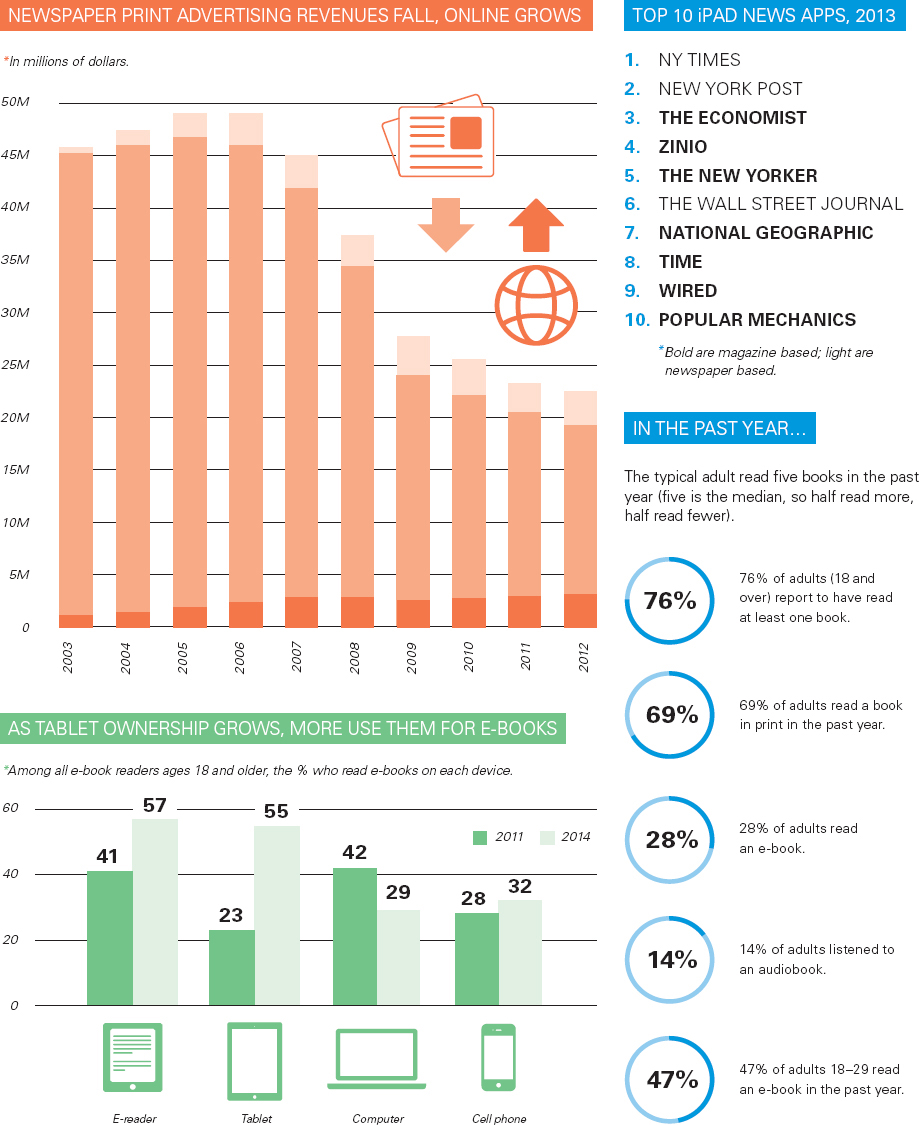Part Three Opener

Part 3
Words and Pictures
The dominant media of the nineteenth century featured printed material, with pictures supplementing the written text of newspapers, magazines, and books—
These media did not disappear when music, radio, and TV came along in the twentieth century. Rather, the newspaper, magazine, and book industries adapted. And in the twenty-
Still, even with the rich older histories of our printed media, we wonder whether rising technological innovation and crumbling business models are obstacles too big to overcome. Indeed, online start-
As we wrestle with the changes of the digital age, does it make any difference whether we get our news from a printed newspaper or an online Web site? Does it matter if we hold a physical magazine or even this textbook in our hands, or is an online version just as good? Digital versions of printed text can be updated, modified, and augmented far more easily, but they lack the traditional physical property of words and pictures printed on paper. What is clear is that newspapers, magazines, and books will continue in some form. Perhaps these forms will represent something entirely new, but the forms pioneered by earlier, physical versions of newspapers, magazines, and books will continue to shape that digital content, even as the ways they are read and interpreted change.
HOW WE READ NOW
